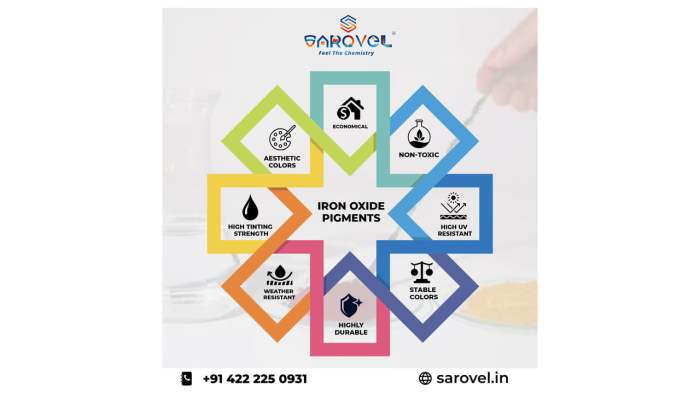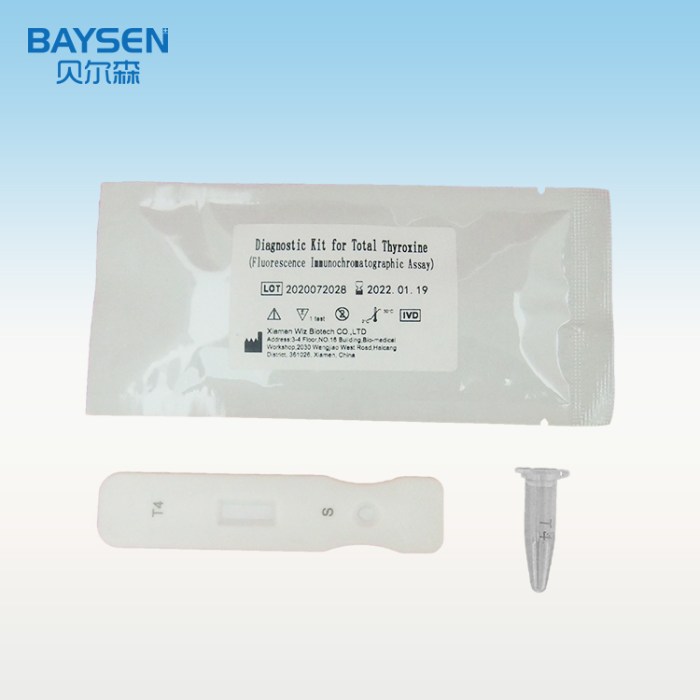Vitamin B vs B12: This exploration delves into the fascinating world of B vitamins, highlighting the crucial role of B12. We’ll uncover the distinct characteristics of B12 compared to the broader B vitamin family, examining their individual functions, dietary sources, absorption mechanisms, deficiency symptoms, and treatment options. Understanding these differences is key to maintaining optimal health.
The B vitamin family plays a vital role in various bodily functions, from energy production to nerve function. While all B vitamins are essential, Vitamin B12 stands out due to its unique structure and specific functions. This comprehensive guide will clarify the distinctions between B vitamins and B12, offering a thorough understanding for anyone interested in optimizing their nutritional intake.
Introduction to Vitamins B and B12: Vitamin B Vs B12

The B vitamins are a group of water-soluble vitamins crucial for various bodily functions. They play essential roles in energy production, cell growth, and nerve function. These vitamins are not stored in the body, so regular intake through diet is necessary. Their diverse functions and importance in maintaining overall health make them indispensable.Vitamin B12 stands out within the B vitamin complex due to its unique structure and critical role in red blood cell formation, nerve function, and DNA synthesis.
While all B vitamins are vital, B12’s specific function in maintaining neurological health and preventing certain types of anemia sets it apart.
Ever wondered about the difference between vitamin B and B12? While both are crucial for overall health, understanding the role of B vitamins in blood health is key. For example, blood thinners are often prescribed after heart valve surgery, as explained in detail at blood thinners after heart valve surgery. This highlights the importance of maintaining a healthy balance of B vitamins, particularly B12, which plays a role in red blood cell production and thus overall blood health.
So, next time you’re looking at your vitamin intake, remember this crucial connection!
Common Dietary Sources of Vitamin B12
Vitamin B12 is primarily found in animal products. These include meat, poultry, fish, eggs, and dairy. People who follow strict vegetarian or vegan diets often need to supplement their intake to meet their daily requirements. Fortified foods like cereals and plant-based milk alternatives can also provide a source of B12. A balanced and varied diet that incorporates these sources can help ensure adequate intake.
Chemical Structure of Vitamin B12
Vitamin B12 has a complex chemical structure, unlike the simpler structures of other B vitamins. It is a large, ring-shaped molecule with a cobalt atom at its center. This unique structure is responsible for its specific biological activity. This intricate molecular design distinguishes it from other B vitamins, enabling its crucial functions in the body.
While vitamin B and B12 are crucial for overall health, understanding the subtle differences between them can be tricky. Just like choosing the right approach for a serious illness, navigating palliative care vs hospice palliative care vs hospice requires careful consideration. Ultimately, knowing the specifics of each vitamin’s role in your body is key to making informed decisions about your health, much like how you’d approach treatment options.
Comparison of B Vitamin Functions
The table below summarizes the general functions of various B vitamins, including B12. Note the diverse roles these vitamins play in metabolic processes.
| Vitamin | General Functions |
|---|---|
| B1 (Thiamin) | Plays a key role in carbohydrate metabolism, essential for energy production. |
| B2 (Riboflavin) | Crucial for energy release from carbohydrates, fats, and proteins. Also involved in cell growth and red blood cell production. |
| B3 (Niacin) | Essential for cell growth, energy production, and the function of the nervous system. |
| B5 (Pantothenic Acid) | A component of coenzymes involved in a wide range of metabolic processes, including energy production and hormone synthesis. |
| B6 (Pyridoxine) | Crucial for amino acid metabolism, red blood cell production, and the function of the nervous system. |
| B7 (Biotin) | Essential for various metabolic processes, including fat, carbohydrate, and amino acid metabolism. |
| B9 (Folate) | Plays a vital role in DNA synthesis and cell growth, particularly during pregnancy. |
| B12 (Cobalamin) | Essential for red blood cell formation, nerve function, and DNA synthesis. Critical for maintaining neurological health and preventing anemia. |
Differences Between B Vitamins and B12
B vitamins play crucial roles in various bodily functions, from energy production to nerve health. While all B vitamins are essential, Vitamin B12 stands out with a unique chemical structure and distinct functions. Understanding these differences is key to appreciating the importance of each vitamin and recognizing the potential consequences of deficiencies.The diverse chemical structures of B vitamins influence their specific functions and absorption processes.
Crucially, B12’s complex structure dictates its unique requirements for absorption, which differ significantly from the simpler structures of other B vitamins.
Chemical Structures and Functions
B vitamins, a group of water-soluble nutrients, exhibit a variety of chemical structures. Vitamin B12, unlike the other B vitamins, possesses a unique, complex structure containing cobalt. This intricate structure is critical for its distinct biological functions. The variations in their chemical structures directly correlate with their diverse roles in cellular metabolism. This complexity allows for specialized functions not found in other B vitamins.
For example, B12 is critical in the synthesis of DNA and myelin, essential components of cellular processes.
Primary Functions Distinct from Other B Vitamins
Vitamin B12’s unique function sets it apart from other B vitamins. While all B vitamins contribute to overall health, B12’s primary role lies in red blood cell formation, nerve function, and DNA synthesis. This distinguishes it from other B vitamins, each having specific functions within the body’s metabolic pathways. The formation of red blood cells, maintenance of nerve function, and synthesis of DNA are unique roles played by Vitamin B12, not shared by other B vitamins.
Absorption Processes
The absorption mechanisms of B vitamins vary. Most B vitamins are absorbed directly into the bloodstream from the small intestine, with the help of various transport proteins. However, Vitamin B12’s absorption is significantly more complex. It requires intrinsic factor, a protein produced by the stomach lining, to bind to B12 and facilitate its absorption in the ileum, a part of the small intestine.
This intricate two-step process highlights the specialized nature of B12 absorption. This crucial step involving intrinsic factor underscores the unique requirement for B12 absorption, a requirement not shared by other B vitamins.
Deficiency Consequences
Deficiencies in B vitamins and B12 can lead to a range of health problems, although the specific symptoms and consequences differ significantly. Other B vitamins, such as B1, B2, and B6, are crucial for energy production and various metabolic processes. Deficiencies in these vitamins can result in fatigue, skin problems, and neurological issues. In contrast, B12 deficiency can lead to pernicious anemia, characterized by large, immature red blood cells, and neurological problems, such as nerve damage and dementia.
This significant difference underscores the importance of understanding the unique role of B12 in maintaining overall health.
Ever wondered about the difference between vitamin B and B12? While both are crucial for energy production, B12 plays a more significant role in nerve function. This is important to consider if you’re experiencing sciatica pain, which can be significantly relieved by targeted physical therapy like physical therapy for sciatica. Proper nerve function, often impacted by deficiencies, is key to managing sciatica symptoms.
So, understanding the nuances of vitamin B vs. B12 becomes even more pertinent when considering overall health and potential nerve-related issues.
Comparison Table, Vitamin b vs b12
| Feature | Vitamin B12 | Other B Vitamins |
|---|---|---|
| Absorption | Requires intrinsic factor, absorbed in the ileum | Direct absorption in the small intestine |
| Deficiency Symptoms | Pernicious anemia, neurological damage, fatigue | Fatigue, skin problems, neurological issues (depending on the specific vitamin) |
Dietary Sources and Intake
Vitamin B12, unlike other B vitamins, is primarily found in animal products. Understanding its unique dietary sources and how the body absorbs it is crucial for maintaining optimal health across all age groups. This section delves into the importance of B12 intake, considering various dietary factors and processing mechanisms.
Rich Dietary Sources of Vitamin B12
A balanced diet rich in animal products is essential for obtaining adequate Vitamin B12. These foods are the primary sources for this crucial nutrient. Note that the quantities of B12 vary significantly compared to other B vitamins.
- Animal Liver: Excellent source, often exceeding the recommended daily intake in a single serving. Organ meats like liver, kidney, and heart are generally concentrated sources of essential nutrients, including B vitamins.
- Meat (Beef, Pork, Lamb): Red meats are significant sources of B12, although the amount varies depending on the cut and preparation method.
- Poultry (Chicken, Turkey): A moderate source of B12, contributing to overall intake but not as substantial as liver or red meats.
- Seafood (Salmon, Tuna, Cod): A good source of B12, offering both the nutrient and valuable omega-3 fatty acids. The quantity of B12 in seafood varies based on species and preparation methods.
- Dairy Products (Milk, Yogurt, Cheese): Contribute a moderate amount of B12 to the diet. Dairy products are also important sources of calcium and other essential nutrients.
Importance of Vitamin B12 Intake Across Age Groups
Sufficient B12 intake is critical at all life stages, impacting nerve function, cell growth, and DNA synthesis.
- Infancy and Childhood: Essential for brain development and growth, ensuring healthy cognitive function and overall well-being.
- Adolescence: Crucial for supporting the rapid growth and development during puberty, influencing physical and cognitive maturation.
- Adults: Maintaining adequate B12 levels is important for overall health and preventing potential neurological complications.
- Pregnancy and Lactation: Increased B12 requirements are crucial for the developing fetus and the production of breast milk. Maternal B12 deficiency can have adverse effects on the child’s health.
- Elderly: Some older adults may have difficulty absorbing B12 from food sources, requiring supplementation in certain cases to prevent deficiencies.
Impact of Dietary Restrictions and Choices
Dietary choices and restrictions can significantly affect B12 levels.
- Vegetarian and Vegan Diets: These diets typically lack animal products, making it challenging to obtain sufficient B12. Supplementation is often necessary to meet requirements.
- Food Processing: Some food processing methods may reduce the B12 content in certain foods. This may require careful consideration in dietary planning.
- Absorption Issues: Certain medical conditions or medications can impair the body’s ability to absorb B12 from food sources. This highlights the importance of consulting a healthcare professional for personalized advice.
Vitamin B12 Absorption Process
The body’s absorption of B12 from different sources varies.
- Animal Products: B12 is readily bound to proteins in animal products. The body efficiently extracts and absorbs B12 from these sources.
- Dietary Supplements: Supplements often provide B12 in a form readily absorbed by the body. However, absorption rates can vary based on the type of supplement and individual factors.
Comparative Vitamin B12 Content Table
The table below provides a general comparison of Vitamin B12 content across different food groups, highlighting the substantial differences in quantities compared to other B vitamins.
| Food Group | Vitamin B12 (mcg) | Other B Vitamins (approximate) |
|---|---|---|
| Organ Meats (Liver) | 10-50+ | High |
| Red Meat (Beef) | 2-10 | Moderate |
| Poultry | 0.5-2 | Moderate |
| Seafood | 0.5-5 | Moderate to High |
| Dairy Products | 0.5-2 | Moderate |
| Fortified Foods | Variable | Variable |
Deficiency Symptoms and Diagnosis
Understanding vitamin deficiencies, particularly B12, is crucial for maintaining optimal health. Symptoms can often mimic other conditions, making early detection vital. Accurate diagnosis hinges on a combination of physical examination, medical history, and laboratory tests.
Common Symptoms of Vitamin B12 Deficiency
Vitamin B12 plays a vital role in red blood cell production and nerve function. A deficiency can lead to a range of symptoms, often developing gradually. Crucially, these symptoms differ from those of other B vitamin deficiencies. Neurological symptoms are a key indicator, often appearing before anemia.
- Neurological Symptoms: Numbness and tingling in the hands and feet, balance problems, vision changes, and cognitive difficulties like memory loss or confusion are common. These symptoms can be particularly pronounced in cases of severe deficiency.
- Anemia: A significant decrease in red blood cell count can result in fatigue, weakness, shortness of breath, and pale skin. This symptom is also linked to other deficiencies, highlighting the importance of distinguishing B12 deficiency from other forms of anemia.
- Gastrointestinal Symptoms: Some individuals experience digestive problems like nausea, vomiting, diarrhea, or constipation. These symptoms are not unique to B12 deficiency and may occur with other dietary issues.
- Other Symptoms: Mouth sores, a sore tongue, and jaundice (yellowing of the skin and eyes) can also be present in cases of B12 deficiency.
Methods for Diagnosing Vitamin B12 Deficiency
Accurate diagnosis relies on a combination of methods, including a thorough medical history, physical examination, and specific blood tests.
- Medical History and Physical Examination: A detailed history of symptoms, dietary habits, and medical conditions is crucial. The doctor will perform a physical examination to assess for signs of neurological problems or anemia. For example, a neurological exam might reveal diminished reflexes or gait abnormalities.
- Blood Tests: Measuring the level of vitamin B12 in the blood is the most common diagnostic method. A low serum B12 level is often indicative of a deficiency. Further tests, like checking for intrinsic factor antibodies, can help determine the underlying cause.
Potential Long-Term Health Consequences
Untreated vitamin B12 deficiency can have severe long-term consequences, impacting various bodily systems.
- Neurological Damage: Persistent nerve damage can lead to permanent neurological problems, impacting motor skills, sensory perception, and cognitive function. Examples include irreversible nerve damage and peripheral neuropathy.
- Cardiovascular Issues: Anemia associated with B12 deficiency can put extra strain on the heart, potentially leading to cardiovascular complications. This may manifest as heart palpitations or shortness of breath.
- Increased Risk of Other Diseases: Some studies suggest a potential link between B12 deficiency and an increased risk of other health issues, such as certain types of cancers and neurological disorders.
Importance of Early Diagnosis and Treatment
Early diagnosis and treatment of B12 deficiency are essential to prevent long-term complications. Early intervention can help mitigate or reverse some of the symptoms.
- Preventing Permanent Damage: Prompt treatment can often prevent or significantly reduce the risk of permanent neurological damage. Early diagnosis can often limit the impact on cognitive function.
- Improved Quality of Life: Addressing the deficiency quickly can help improve overall health and well-being, reducing symptoms like fatigue and neurological issues.
- Avoiding Complications: Early intervention can minimize the risk of developing long-term complications, improving the individual’s quality of life and potentially preventing further health issues.
Comparison of Deficiency Symptoms
| Vitamin | Symptoms |
|---|---|
| Vitamin B12 | Neurological problems, anemia, gastrointestinal issues, mouth sores, tongue soreness, jaundice |
| Vitamin B1 | Loss of appetite, fatigue, irritability, and nervous system disorders, progressing to potentially fatal conditions. |
| Vitamin B2 | Inflammation and cracking of the lips, inflammation of the mouth and throat, skin lesions |
| Vitamin B3 | Skin lesions, diarrhea, and neurological symptoms |
| Vitamin B6 | Skin lesions, anemia, neurological symptoms |
| Vitamin B9 (Folate) | Anemia, neurological symptoms, gastrointestinal issues |
Supplements and Treatment
Understanding how to manage vitamin B12 deficiency effectively is crucial for maintaining good health. Proper supplementation, when necessary, plays a vital role in restoring optimal levels and alleviating symptoms. However, it’s important to remember that self-treating can be risky. Always consult with a healthcare professional before starting any new supplement regimen.Effective management of vitamin B12 deficiency involves a multi-faceted approach, combining dietary changes with supplementation when necessary.
This approach ensures that the body receives the required nutrients and addresses the root cause of the deficiency. The information below provides an overview of different B12 supplements, their potential side effects, treatment approaches, and the importance of professional guidance.
B12 Supplement Forms
Various forms of vitamin B12 supplements are available, each with potential differences in absorption rates and suitability for individual needs. Choosing the right form is often determined by factors such as individual tolerance and the specific needs of the patient.
- Cyanocobalamin: This is the most common form of B12 supplements. It’s relatively inexpensive and readily available. However, some individuals may experience issues with its absorption or metabolism. This form is generally well-tolerated but can potentially lead to minor side effects in some cases.
- Methylcobalamin: This active form of B12 is believed to be more easily absorbed and utilized by the body. Studies suggest it might be more effective for certain individuals, especially those with absorption problems. It’s often preferred for those with specific metabolic needs.
- Adenosylcobalamin: This form of B12 plays a crucial role in nerve function. It might be particularly beneficial for those experiencing neurological symptoms related to deficiency. It is another active form, potentially offering benefits in specific circumstances.
- Hydroxycobalamin: This is another active form. It’s naturally occurring and is considered a stable form of B12. It may be more readily available in the body, and some studies suggest it can be well-tolerated, especially for long-term supplementation.
Treatment Approaches for Vitamin B12 Deficiency
Effective treatment for vitamin B12 deficiency is dependent on the underlying cause and severity of the deficiency. Addressing the root cause, whether dietary or related to absorption issues, is paramount.
- Dietary Changes: Incorporating foods rich in vitamin B12, such as meat, poultry, fish, eggs, and dairy products, can often help replenish levels. Dietary adjustments should be considered as a first step in many cases.
- Supplementation: Supplementing with vitamin B12 is often necessary, especially when dietary intake is insufficient or absorption is impaired. The type of supplement and dosage should be determined by a healthcare professional.
- Medical Interventions: In some cases, such as those with pernicious anemia or other underlying conditions, medical interventions may be necessary to improve absorption or address the underlying cause of the deficiency. This often involves working closely with a doctor to determine the best course of action.
Importance of Professional Guidance
Seeking professional medical advice is crucial before starting any vitamin B12 supplement regimen. A healthcare provider can assess the individual’s needs, determine the appropriate dosage and form, and monitor progress. They can also rule out any underlying medical conditions that may be contributing to the deficiency. This is essential for a safe and effective treatment plan.
Dosage and Frequency of Vitamin B12 Supplements
The recommended dosage and frequency of vitamin B12 supplements vary depending on the individual’s specific needs and the form of supplement used. A healthcare professional can provide personalized recommendations based on a thorough assessment.
Comparison of B12 Supplement Forms
| Supplement Form | Absorption Rate (Estimated) | Potential Side Effects |
|---|---|---|
| Cyanocobalamin | Generally good | Possible allergic reactions, gastrointestinal upset in some individuals |
| Methylcobalamin | Potentially higher | Generally well-tolerated |
| Adenosylcobalamin | Good | Generally well-tolerated |
| Hydroxycobalamin | Good | Generally well-tolerated |
Note: Absorption rates are estimates and can vary based on individual factors.
Interactions with Other Nutrients
Vitamin B12’s role in the body is intricately linked with several other nutrients. Its absorption and utilization are influenced by a complex interplay of factors, including the presence or absence of specific substances in the diet. Understanding these interactions is crucial for maintaining optimal B12 levels and preventing potential deficiencies.A healthy intake of Vitamin B12 often hinges on the presence of intrinsic factor, a protein produced by the stomach.
This factor is essential for the absorption of B12 in the small intestine. However, the absorption process can be negatively impacted by various factors, such as certain medications or dietary choices. Furthermore, the body’s ability to utilize B12 effectively is also dependent on the availability of other nutrients, creating a chain reaction where the lack of one can affect the effectiveness of another.
Nutrient Interactions with Vitamin B12
The body needs a delicate balance of nutrients to effectively absorb and utilize Vitamin B12. Several dietary components can either enhance or hinder its absorption.
- Intrinsic Factor: The stomach produces intrinsic factor, a glycoprotein essential for the absorption of Vitamin B12. Without sufficient intrinsic factor, B12 cannot be properly absorbed, leading to deficiency. This is often seen in conditions like pernicious anemia.
- Dietary Fiber: High-fiber diets can sometimes impede B12 absorption, though the effect is typically not significant in healthy individuals. A balanced diet that includes fiber is generally beneficial, but high amounts might need to be managed if B12 levels are a concern.
- Folic Acid: Folic acid and vitamin B12 work synergistically in many metabolic pathways. A deficiency in one can sometimes mask the symptoms of a deficiency in the other, leading to a misdiagnosis. Adequate intake of both is important for overall health.
- Iron: Iron can sometimes interfere with B12 absorption, though the exact mechanism is not fully understood. Consuming high amounts of iron-rich foods alongside B12-rich foods might need to be managed in some individuals to ensure optimal absorption.
Interactions with Medications and Supplements
Certain medications and supplements can interact with Vitamin B12, either increasing or decreasing its absorption or utilization.
- Antacids: Antacids, often used to treat heartburn or indigestion, can sometimes interfere with the absorption of Vitamin B12. The interaction is usually mild, but it’s important to be aware of the possibility.
- Metformin: This medication, commonly used to treat type 2 diabetes, can sometimes reduce Vitamin B12 levels. Monitoring B12 levels is crucial for individuals taking metformin, particularly if they have risk factors for B12 deficiency.
- Proton Pump Inhibitors (PPIs): These medications, used to reduce stomach acid, can significantly reduce intrinsic factor production, thus impairing B12 absorption. This is a notable concern for long-term PPI use.
- Certain Antibiotics: Some antibiotics can affect gut bacteria, which are involved in the metabolism of certain vitamins, including B12. This effect is typically temporary and does not pose a significant risk, but should be noted.
Examples of Interactions
A patient with pernicious anemia, for instance, may have difficulty absorbing Vitamin B12 due to insufficient intrinsic factor production. This leads to a deficiency in B12 and manifests in neurological symptoms and anemia. Similarly, a person taking a high dose of metformin for diabetes might experience a subtle decline in B12 levels, requiring supplementation to prevent deficiency.
Potential Nutrient Interactions with Vitamin B12
| Nutrient | Potential Interaction | Impact on B12 Absorption/Function |
|---|---|---|
| Intrinsic Factor | Essential for absorption | Lack of intrinsic factor impairs B12 absorption |
| Dietary Fiber | Possible slight impairment | High fiber intake might slightly hinder absorption |
| Folic Acid | Synergistic | Deficiency in one can mask deficiency in the other |
| Iron | Potential interference | High iron intake might slightly hinder absorption |
| Antacids | Possible impairment | May slightly hinder B12 absorption |
| Metformin | Potential reduction | Can decrease B12 levels over time |
| PPIs | Significant impairment | Reduce intrinsic factor production, impairing absorption |
| Antibiotics | Possible impact on gut bacteria | Potentially affects B12 metabolism |
Role in Health and Well-being
Vitamin B12, a crucial nutrient, plays a vital role in maintaining overall health and well-being. Its impact extends beyond simply contributing to energy levels, influencing critical bodily functions that affect our cognitive abilities, mental state, and even our physical composition. Understanding the multifaceted role of Vitamin B12 is essential for appreciating its significance in a healthy lifestyle.Vitamin B12’s importance transcends its role in energy production.
It’s indispensable for various bodily processes, especially in red blood cell formation and nerve function. Adequate levels are directly linked to optimal health outcomes.
Red Blood Cell Formation
Vitamin B12 is essential for the production of healthy red blood cells. These cells are responsible for carrying oxygen throughout the body. A deficiency in Vitamin B12 can lead to megaloblastic anemia, a condition characterized by the production of abnormally large, immature red blood cells. These cells are less efficient at carrying oxygen, leading to fatigue, weakness, and other symptoms.
Maintaining adequate Vitamin B12 levels ensures the formation of healthy, functional red blood cells, promoting optimal oxygen delivery to the body’s tissues.
Nerve Function
Vitamin B12 is critical for the maintenance of healthy nerve sheaths, the myelin. These sheaths protect and insulate nerve fibers, allowing for efficient transmission of nerve impulses. Adequate Vitamin B12 levels are essential for nerve function, impacting everything from reflexes to cognitive processes. A deficiency can lead to nerve damage, resulting in symptoms like numbness, tingling, and impaired coordination.
Thus, maintaining optimal Vitamin B12 levels supports the integrity and function of the nervous system.
Impact on Overall Health
Sufficient Vitamin B12 levels contribute to overall well-being. They influence the function of many body systems, including the circulatory, nervous, and digestive systems. Maintaining a healthy balance of Vitamin B12 supports a healthy immune system and helps in various metabolic processes.
Vitamin B12 and Energy Levels
Vitamin B12 plays a crucial role in converting food into usable energy for the body. It is a critical component of metabolic pathways that facilitate energy production. Low Vitamin B12 levels can lead to fatigue, reduced energy, and overall weakness. A well-balanced intake of Vitamin B12 supports the body’s energy production, ensuring a more sustained and active lifestyle.
Vitamin B12 and Cognitive Function
Cognitive function, encompassing memory, learning, and concentration, relies on optimal brain health. Vitamin B12 is a crucial player in maintaining this health. Research suggests that adequate levels of Vitamin B12 are linked to improved cognitive performance and reduced risk of cognitive decline. A deficiency in Vitamin B12 has been associated with cognitive impairment and mental health issues.
Relationship Between Vitamin B12 and Various Bodily Functions
| Bodily Function | Role of Vitamin B12 |
|---|---|
| Red Blood Cell Formation | Essential for the production of healthy, functional red blood cells, crucial for oxygen transport. |
| Nerve Function | Maintains the integrity of nerve sheaths (myelin), ensuring efficient nerve impulse transmission. |
| Energy Production | Plays a key role in converting food into usable energy. |
| Cognitive Function | Supports brain health, potentially linked to improved cognitive performance and reduced risk of cognitive decline. |
| Mental Health | May contribute to mental well-being by supporting nerve function and cognitive processes. |
| Metabolism | Influences various metabolic processes, contributing to overall health. |
Final Summary

In conclusion, while all B vitamins are crucial, Vitamin B12 has a unique set of functions, absorption methods, and deficiency symptoms that set it apart. Understanding these nuances is important for making informed dietary choices and ensuring optimal health. This detailed comparison allows for a clearer perspective on how to maintain balanced B vitamin levels. Remember, consulting a healthcare professional is always recommended before making significant dietary changes or starting any supplements.































